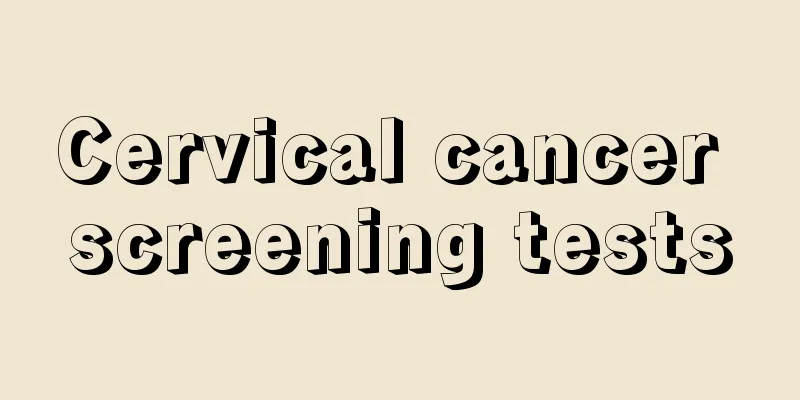Cervical cancer screening tests

|
There are many methods for cervical cancer screening, including cervical smear, TCT examination, cervical iodine test, colposcopy, etc. These examination methods require patients to take relevant examination measures, and these examination methods also require patients to take good post-operative care. There are many examinations required for cervical cancer screening. Women should listen to the doctor's advice and should not have sexual intercourse before and after the examination. 1. Cervical smear cytology test or TCT test is the most basic and main method for cervical cancer screening. Samples are usually scraped from the cervical transformation zone. Sent to laboratory for cytological testing. 2. Cervical iodine test. Because under normal circumstances, the squamous epithelium of the cervical vagina is rich in glycogen, and will appear brown or dark brown after being stained with iodine solution. If the color does not change after staining, that is, the unstained area indicates that the epithelium there does not contain glycogen, which is an abnormal phenomenon and may be cancerous. Samples should be taken from the iodine-unstained area for biopsy to further confirm the diagnosis. 3. Colposcopy: When TCT detects abnormalities, that is, when the cervical scraping cytology examination shows Pap smear grade III or above and TBS indicates squamous intraepithelial neoplasia, a cervical biopsy should be performed on the suspected cancerous area under colposcopy. 4. Biopsy of the cervix and endocervical canal. This is the most reliable basis for diagnosing cervical cancer and cervical precancerous lesions. The tissue obtained should include interstitial tissue and adjacent normal tissue. If the cervical smear shows positive, but the cervix is smooth or the cervical biopsy is negative, in this case, the cervical canal should be scraped with a small scraper, and the scrapings should be sent to the laboratory for pathological examination. 5. Cervical conization. This is when the cervical smear test is positive several times but the cervical biopsy is negative; or when the cervical biopsy is cervical intraepithelial neoplasia and invasive cancer needs to be excluded, the cervical conization is performed on the cervix and then sent to the pathology laboratory for examination to determine whether there is cancer. The above are the items to be done in cervical cancer screening. From these items, we can see that the next level of inspection will only be carried out when problems are found in the previous level inspection and need to be investigated. Therefore, in order to prevent cervical cancer, we should start with the first step of cervical cancer screening and conduct TCT examinations regularly every year. It is better if there are no abnormalities. If abnormalities are found, we should check them step by step according to these items. Finding out the culprit of cervical cancer is of great significance for preventing cervical cancer. |
<<: What is the best food for breast hyperplasia?
>>: Is it okay to do Lip knife for cervical erosion?
Recommend
What are the disadvantages of autologous fat breast augmentation?
Women all hope to have a plump breast, which not ...
Can pregnant women with cervicitis give birth naturally?
Pregnant women can choose between cesarean sectio...
What should we pay attention to when we have candidal vaginitis?
Some women often find that their vaginal discharg...
What is lotus milk
Perhaps due to the influence of living and workin...
What should I do if there is abscess on the vulva?
Some women find pustules on their private parts, ...
Side effects of ornidazole vaginal suppositories
We know that the female reproductive organs are v...
The reason why menstruation is delayed for two days
Every woman wants her menstruation to be normal, ...
Does dark menstrual blood affect pregnancy?
Dark menstrual blood is caused by heavy menstrual...
Can pregnant women eat sea cones?
The conch is a very small large conch with an ext...
What are the reactions to biochemical pregnancy?
Seeing the term biochemical pregnancy, many frien...
Itchy and painful down there
For most women, when problems occur in their priv...
Causes of excessive and yellow leucorrhea
Leucorrhea is one of the criteria for detecting w...
What to do if breastfeeding mothers always suffer from insomnia
Breastfeeding mothers are prone to insomnia, whic...
What will happen if you touch cold water during menstruation?
Women have their menstrual period for a few days ...








![[Medical Q&A] Is Alzheimer's disease hereditary?](/upload/images/67f0e68c9ec9a.webp)
